After living in his two bedroom apartment in the happy ones for more than a decade, Debra Weiss found a problem experienced by many tenants in Los Angeles: it was evicted.
“I moved to the apartment in 2014, and four years later, my lessor sold it to a rich family that bought it with losses,” said Weiss, 69, who works as a textile artist. “They knew they couldn't get evict due to rental control.”
In this series, we highlight the Los Angeles Rentals with style. From perfect gallery walls to temporary decoration pirates, these tenants become creative, even in small spaces. And Angelen needs inspiration: most are tenants.
However, when the owners put the complex of three units in the market in 2022, they offered Weiss $ 50,000 to move, much more than the amount required by law, to facilitate their building. She declined, worried that it would affect its benefits of Social Security, since there is a limit for how much you can win and still receive complete benefits.
Then, last February, the three tenants received eviction warnings under Ellis Law, which allows owners to evict rental rental tenants by rental if the building is being demolished or eliminated from the rental market. It is currently on sale for $ 3.2 million.
As a last year student, Weiss had the right to a full -year warning because he had lived in his unit for more than a year. Even so, he knew that he would eventually have to move from the comfortable duplex of 1,200 square feet, so he paid $ 2,670 per month for rent.

The artist Debra Weiss is in her dining room, where she often works as a fiber artist.
When he started looking for another apartment in the area, Weiss quickly learned that he could no longer afford to live in the happy ones. “The apartments were much more expensive than I was used to paying, and they had no parking or washer or dryer,” he said. (Weiss was paid $ 24,650 in relocation assistance, which was taxed, due to her age and while she lived in her happy apartment).
He also visited some small studies and considered buying a common tic or possession, where buyers buy an action in a corporation that owns a building. However, to ensure a loan, I would need someone to firm. “Although they are cute, they are small and not necessarily in the best neighborhoods,” he said. Another option, an artisanal apartment near the USC, was not in a good neighborhood to walk, something important for Weiss. It was also dark and hundreds of dollars more a month than your previous apartment. “I am almost 70 years old and I need light to work,” he added.
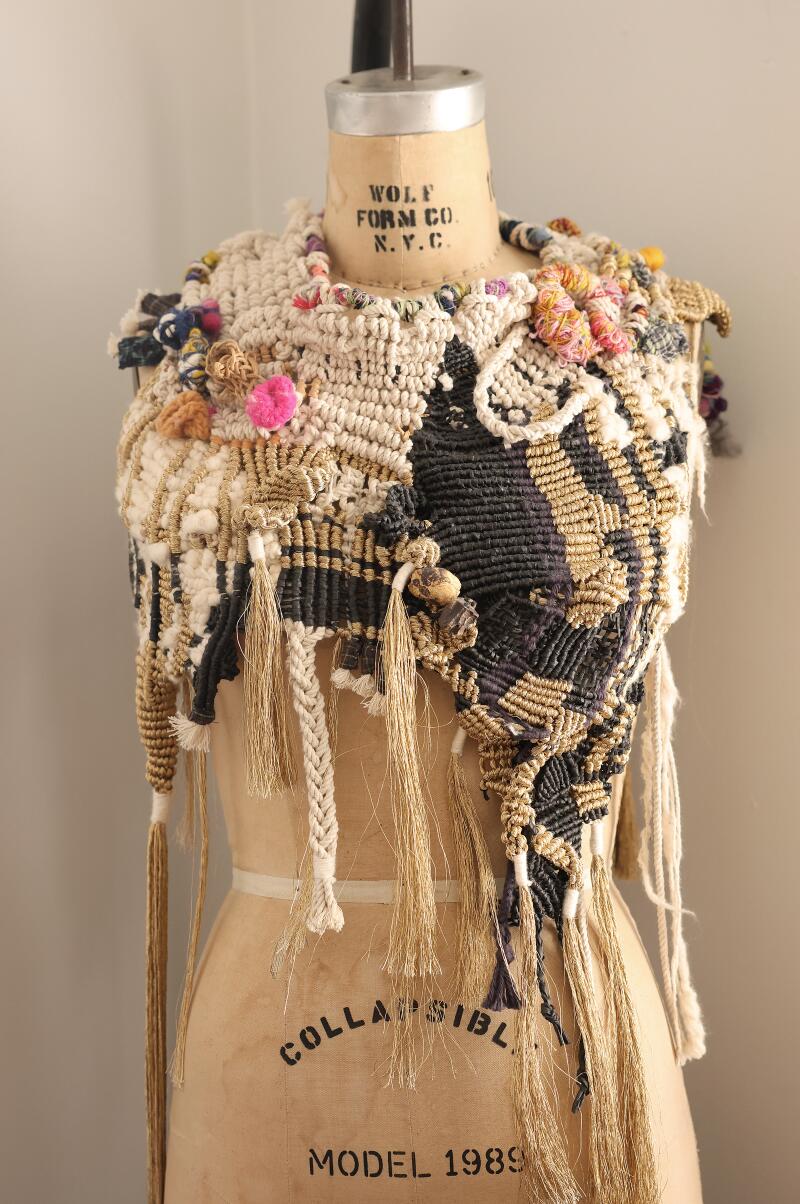
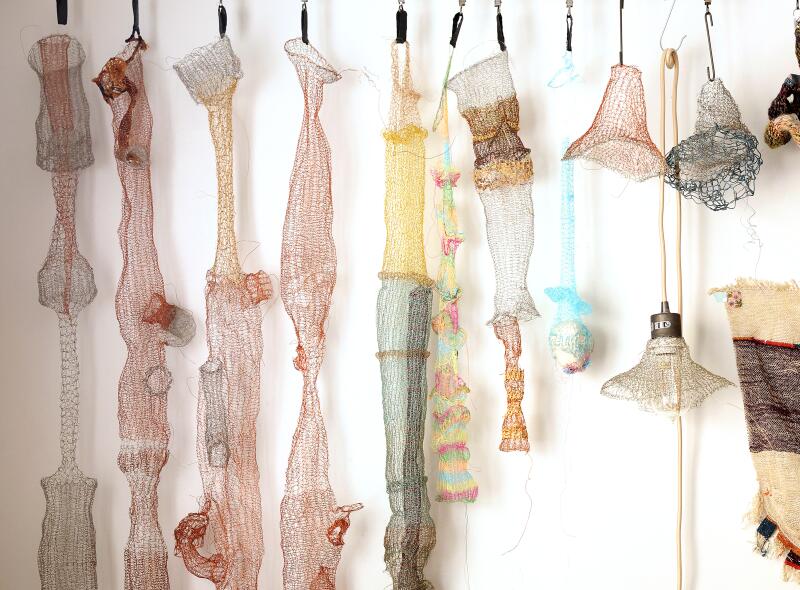

Sculptures with hand, embroidery fabrics and a carpet with tufts adorn the guest room.
When his son -in -law saw a lovely two bedroom apartment near the Los Angeles County Art Museum for $ 2,950 per month in Zillow, Weiss decided to check it.
“My initial reaction was: 'I want this,” Weiss said about Fourplex.
The rent had high roofs, oak floors, large sunlight, an attractive fireplace, a garage and a washer and dryer. A freshly redone modern kitchen felt out of place for the 1930s building, but that did not bother Weiss. “The kitchen is a blank canvas,” he said about white cabinets and countertops. “The white background makes all my things stand out,” including the ceramics of Mount Washington Pottery and Altadena's artist, Linda Hsiao.

Weiss weaves a sweater for her granddaughter with a thread she bought in Japan.
Concerned that the owner did not want to rent it due to his age, he was pleasantly surprised when he got the apartment. “The light is incredible,” said Weiss. “I initially worried about some of the modern touches such as upper lighting, but flood the room with bright light that allows me to work at night.”
Almost a year after moving, Weiss has filled the apartment with its sewn collages, mats and the works of others, many of which described as “exchanges.” “I like color, pattern and objects,” he said while pointing out some Japanese ceramics in her buffet and a dress that she fooked with pieces of fabric, thread and metal.
In the guest room, a hanging wall composed of three separate fabrics in a guinillos verification pattern is embroidered with a series of characters that based on the drawings of his 5 -year -old granddaughter. “These are people who join in chaos and support each other,” said Weiss. “I like the pattern; it reminds me of eating together at picnic tables.”
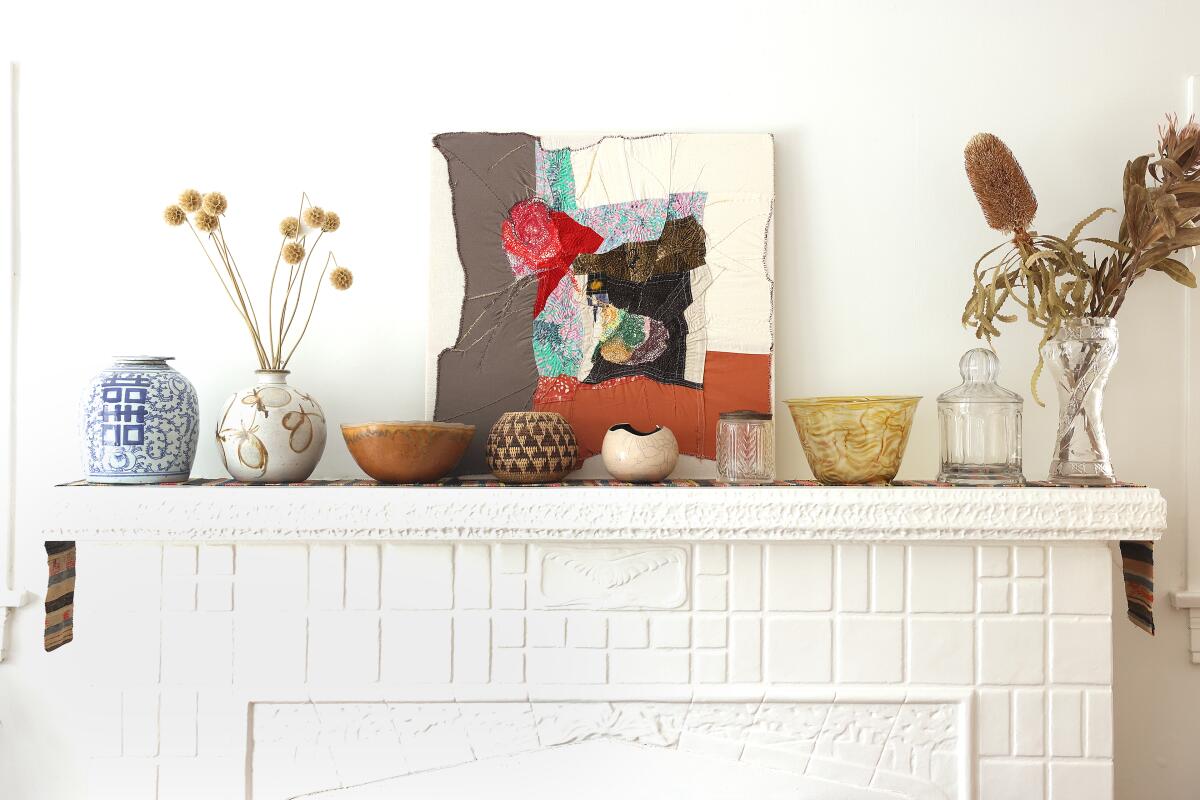
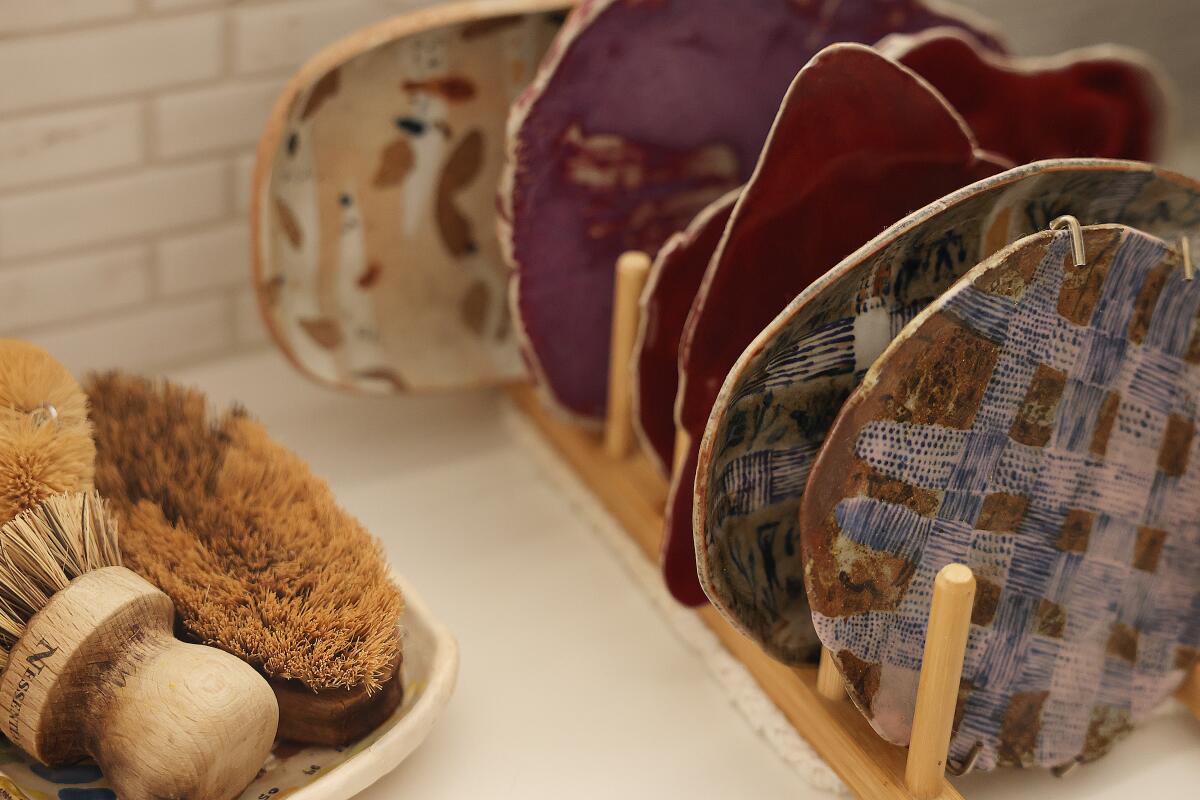


“I like objects,” Weiss said about the many treasures and collections of things that are presented throughout their rental.
On the opposite wall of the guest room on its sewing machine, a series of metal sculptures that wove with copper and colgram silver next to dolls and fabric wallets. In the corner, a hood made of macramé, textiles and thread adorns a mannequin. There is also a colorful pestillo hook carpet that made acrylic thread that looks more like works of art than a functional accessory.
In his room, a cover that Weiss gathered vintage remedies adorns the bed.
The long corridor ends in the laundry and is bordered with its colorful bedspreads, some of which are mounted on the homasote board, along with fabrics and sewn works, which, like their kitchen, are improvisation.
“I work without planning and responding to the materials and I see what it becomes,” he said. “I start to weave and see where it is going. I am excited about the material and then I do it.”

The hall in Weiss's apartment is full of his works of art.
Much of the wooden furniture in his apartment were made by his father, who died 13 years ago.
“I have had this since my children were young, and you can see all the brands,” he said on the cabin in the corner of his dining room. “My dad did it 40 years ago for the Van Nuys house where I grew up.”
It is here, at the table of the dining room that his father made, who works, organizes workshops and teaches arts of fiber, collage and seams. Later this year, he hopes to organize a sale of his work on a holiday day in his apartment.

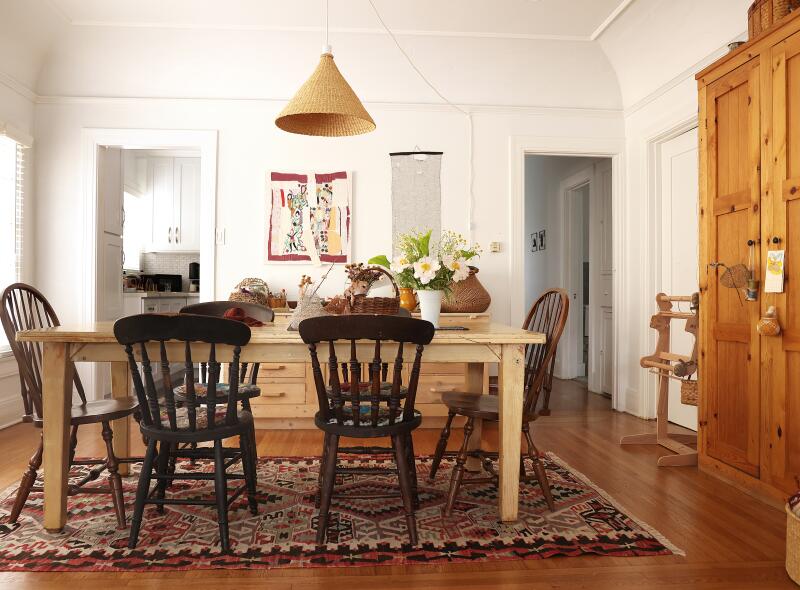

Weiss is an expert in mixing texture, pattern and color in her apartment in the mid -Wilshire.
The mixture of colorful Persian carpets, textiles, natural materials, thick wooden pieces and intricately woven metal sculptures create a warm balance in their entire apartment.
Facing color and pattern, the rooms offer a feeling of calm that Weiss appreciates how a woman who raised three daughters alone and has had to pivot during the main changes in life. Over the years, he has directed a clothing company, Rebe, which closed in 2019 due to economic uncertainty, said in bankruptcy and sold his house of Woodland Hills. More recently, he was forced to resist the eviction process.
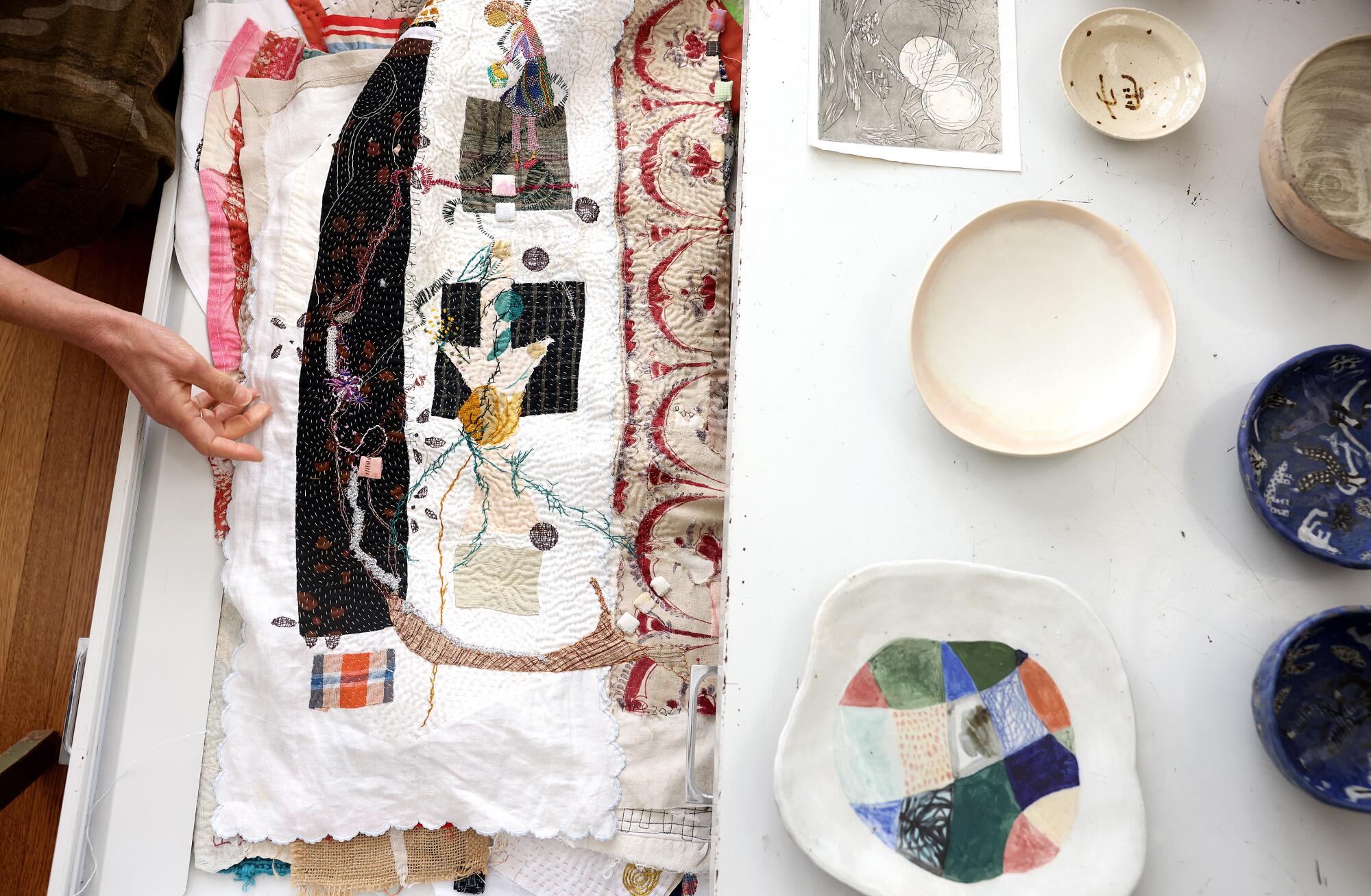
“I have always been an entrepreneur,” said Weiss, who works six to eight hours a day at home and sells his works of art and sewing patterns on his motor and maintenance website and in Los Angeles of the Homeell in Glassell Park. “I will always find a way to earn money selling the things I do.”
Although the process of having to move was stressful, Weiss is happy with his new home and neighborhood. “I take the subway bus everywhere and almost never drive,” he said. “I go to the Hollywood farmers market on Sundays. Kaiser is close and I can walk Lacma. Everything worked perfectly.”

Weiss draws a drawer from your flat file cabinet full of your art work.












